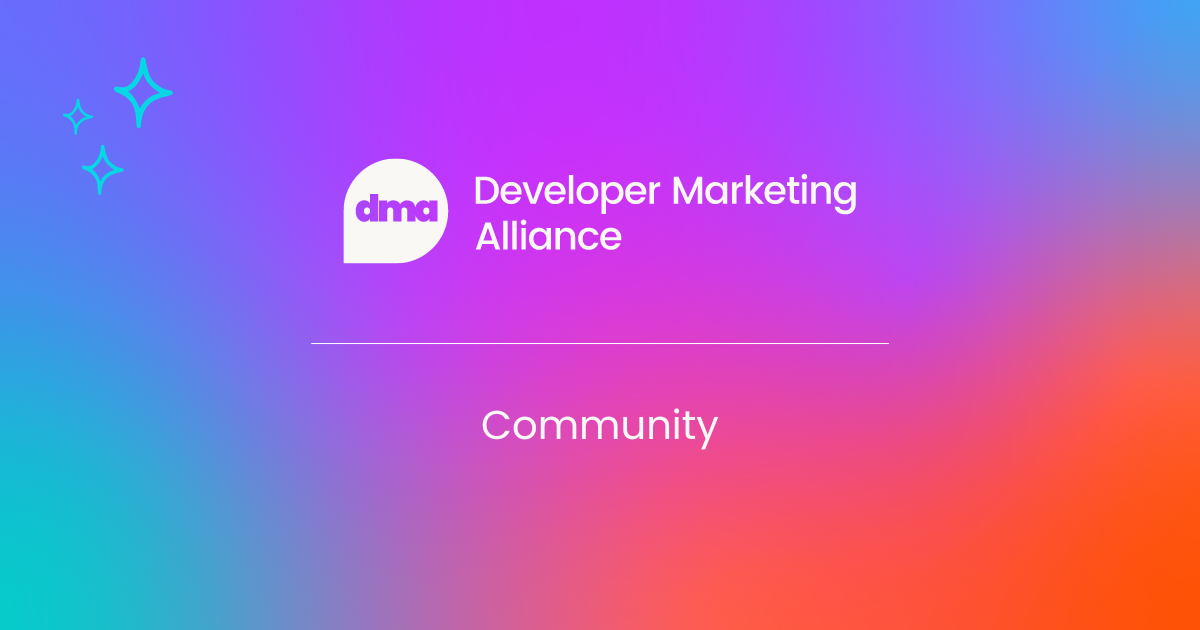Looking for the knowledge and tools to craft compelling email marketing campaigns and engage your developer audience via social media effectively?
Creating strategies that work means understanding the unique preferences and behaviors of your developer community.
So, let’s dive into developer-focused email and social media marketing. 👇
Developer-focused email marketing
As marketing professionals, we understand the importance of targeted communication. Developers value substance over style and prefer straightforward, no-nonsense communication.
You can use a combination of demographic, behavioral, firmographic and psychographic segmentation to effectively target developer personas.

When it comes to email marketing for developers, there are a few types of campaigns that work really well:
Developer newsletters
That’s right, newsletters can be an efficient way to target developers. So, don’t miss out on the benefits they can offer. After all, newsletters should provide a lot of value to developers through how-tos, educational content, updates on the latest technologies, and on the tools and languages they care about.
You might share tutorials on new frameworks, updates on open-source libraries, languages like Python or JavaScript, or tools like Git. Keep the content short and sweet but impactful, focusing on things developers can learn and apply right away. Include lots of links so they can learn more.
Send newsletters on a consistent schedule, that is both appropriate to your target audience and feasible from a production capacity—this might be weekly or monthly, for example. Promote signups to newsletters via prominent calls to subscribe on your homepage and social feeds.
You can even use advertising to further amplify the newsletter’s reach. Some great examples to look at would be newsletters from TensorFlow and Google for Developers.
In certain cases, it is ok to use long, detailed content. This is especially helpful when introducing a problem-solving approach, a groundbreaking new paradigm or framework, or a gnarly concept. Developers value quality and utility and resonate well with well written content.
Product announcement emails
Use these sparingly, only for truly important launches or updates. For instance, if you're releasing a major new API, developer toolkit, or are overhauling your SDK.
When you do send them, make the content highly valuable, in-depth, and focus on how the new feature actually benefits developers and solves their real problems. The messaging should still focus on education over promotion.
Explain the "what", "how" and "why"—not just that it exists! At the same time, content best practices still apply. It's best to link extensively and make the content readable and digestible.
Nurture sequences
Start with an intro email that provides one or two notable content resources, like an in-depth guide, tutorial or whitepaper. In the follow up emails, you can send both short and long-form content, as long as you continue to educate.
For example, you might share a case study showing how another developer solved a problem, then a breakdown of your own solution. Softly mention your product or include a call to action (CTA) once the audience is warmed up.
End with a strong CTA, like offering a free trial or demo.

Best practices for developer email marketing
Be authentic and create real value
Developers will unsubscribe from anything spammy, salesy or fluffy. If you can demonstrate value whilst being genuine and engaging, you'll be in a great place to build trust and drive action from developers through email marketing.
Craft concise, informative emails with clear CTAs
When it comes to crafting emails for developers, less is more. Developers appreciate concise, informative emails that respect their time. Long-form content can work well for detailed concepts, frameworks or problem solving approaches but must be written well. It’s usually a good idea to convert these to blogs and link within emails.
The CTAs in your email should be clear and relevant. Vague CTAs like “Learn More”, “Check it Out” should be replaced with “Read the documentation”, “Explore the tutorial”, “Try the API” or something more actionable.
For new users, the CTA could be a link to your documentation or a video tutorial. For active users, it might be an invitation to provide feedback or join a community discussion.
Monitor your unsubscribe rates
A high unsubscribe rate could indicate that your emails are not resonating with your developer audience. Any campaigns with >1% unsubscribe rates should be watched, and >2% unsubscribe rate may call for diagnosis and analysis on your lists.
Usually, aged lists and inactive subscribers are a strong reason for high unsubscribes. It’s a good idea to also analyze your segment definitions and revise the criteria.
Refactor your email content
Try focusing on a different set of topics, different types of campaigns, or different offers.
Good email marketing platforms, such as MailChimp, Marketo, HubSpot and Active Campaign, usually have rich design and segmentation capabilities built in, with strong analytics and A/B testing capabilities. So, choosing a good platform can unlock many more creative possibilities.
Engaging developers on social media
Social media is essential for creating vibrant developer communities. Developers are tech-savvy, often skeptical, and prone to using ad blockers to stop ads and keep popups off their screens. You need to thoughtfully approach social media content to developers.
Developers are active on various social media platforms, and each platform offers unique opportunities for engagement. According to Sculpt marketing’s social media marketing for developers survey in 2022, developers frequently use X, StackOverflow, Slack, Discord, and Reddit to learn about new solutions.
LinkedIn and YouTube remain extremely popular. Discord has been steadily gaining mindshare, especially for AI developers.
Why do developers use social media?
There are several main reasons:
To learn new skills
Software developers are often self-taught people, curious about the latest tech trends and how to optimize their software stack knowledge and skills. X is a top destination for developers to share their wisdom, solutions, and opinions, while technical discussions live prominently on Stack Overflow. There’s also been a rise in video coding tutorials on YouTube.
For social proof
According to a Stack Overflow survey, over 60% of developers ask other developers if they know about it or visit developer communities to look for feedback. It means that external opinion matters and has a lot of weight in the final decision process.
They are most likely to sign up for something if they have already heard of it from a colleague or an influencer. So, social proof and community endorsement can play an important role in driving product adoption.

To network and advance professionally
Sharing a project, a part of a complex code can get hundreds of likes. Developers share and reciprocate to high quality problem solving approaches, or coding inspirations on social media.
Many developers see social media as a vital channel to engage with communities they care about and to land professional opportunities.
To have fun
Developers enjoy a good laugh at their shared challenges and views. Memes tend to do really well with developers, both on X and on Reddit. Subreddits such as r/programmingHorror and r/ProgrammerHumor are popular places for them to have a good laugh.
Pick the right social platform
As a marketer, you should leverage these platforms to reach your developer audience. However, remember that each platform requires a unique approach.
For example:
- X is great for sharing brief updates and starting discussions,
- StackOverflow is suitable for in-depth technical discussions,
- Reddit has tons of channels for niche developer interests and a great way to discover opinions,
- LinkedIn is great for professional engagement and more business-centric discussions, and
- Discord is a rich platform for tinkerers and conversational insight.
Choose your content format based on the platform, and be willing to experiment and mix things up. Popular post types include:
- Product/Feature launch
- Upgrades and new patches
- Code samples
- Tutorials/solutions for frequently asked questions
- Community recognition
- Fun, quirky developer memes
- Event announcements
Developers value community interaction and learning from their peers. Therefore, fostering relationships within developer communities can be a powerful strategy.
For example, you might seek out online communities for devs focused on a specific programming language, like Javascript, Python, C#, research the problems they face, and connect by offering possible solutions.
Use developer influencers
Moreover, consider leveraging influencers who share helpful tips. Developers follow influencers, and whether through paid or unpaid partnerships, you should leverage influencer marketing in your social media marketing as much as possible.
Developers follow influencers who share helpful tips. One way to find top influencers is to search for the most relevant keywords and hashtags on X, Stack Overflow and LinkedIn and then identify the most followed community members.
Another approach is to use influencer platforms and social tools:
- FollowerWonk – This tool helps you find influencers quickly using developer-centric terms. You can use it to find Twitter accounts sorted by the number of followers and tweets.
- Onalytica – To get started using this tool, all you need to do is upload a piece of content, and it will help you find the top influencers for that type of content.
- BuzzStream – A tool to help you find, connect, and manage relationships with influencers. It can help you build an app marketing strategy for your products.
Engaging developers on social media requires a tailored approach that focuses on providing value and fostering community interaction. By creating the right conversational content, leveraging different platforms, and encouraging community interaction, you can effectively engage developers and build lasting relationships.
In short
Don’t dismiss email and social media when engaging with developers. Many strategies and platforms work well for developers, so why not experiment to learn what resonates with your specific audience?
Also, it’s crucial to remember that developers are highly knowledgeable and technical; they value authenticity, technical depth, and practical insights, so you have to tailor your strategies to meet these preferences.
Have you joined the Developer Marketing Alliance Slack community? Here, you can network with other professionals like yourself, ask questions, stay on top of the latest news, and so much more.







